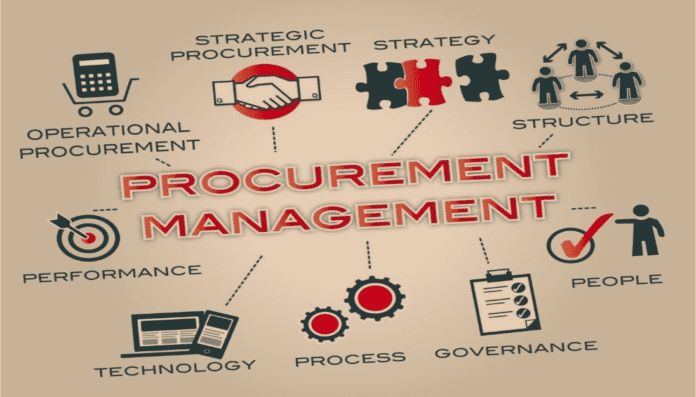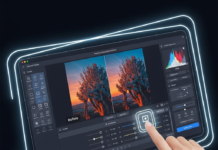Last Updated on March 10, 2025 by Bisma Sehar
Procurement management is one of the key functions that organisations need to modernise to optimise processes, cut expenses, and secure a stable position in a rapidly evolving business environment. The procurement management software is an efficient solution to address multiple weaknesses of traditional procurement and enjoy a plethora of benefits that are guaranteed to enhance its effectiveness, and transparency, and support the strategic objectives of a business. Moreover, equipped with modern technologies and automation, these systems also enable organisations to become leaders in a highly competitive modern business setting.
Table of Contents
Streamlined procurement processes
First and foremost, a thorough examination has exposed a significant advantage of procurement management software. The tool effectively optimises multiple procurement activities, ranging from requisition to supplier identification and evaluation to contract negotiation. Thus, these solutions centralise the activities and eliminate manual interventions or interdisciplinary managing teams. In addition, with automation, repetitive activities can be quickly conducted with accuracy and consistency across multiple projects and all activities. It also allows businesses to prevent mistakes and costly errors, improving their overall productivity and effectiveness.
Improved visibility and control
Organisations gain the opportunity to see their procurement operations live by using procurement management software. Enterprises can monitor their spending, supplier performance, and other relevant process metrics thanks to robust reporting and powerful analytics. Transparency in all aspects allows companies to make informed decisions, allowing them to refine procurement strategy and exercise more control over spending. Procurement-related data enables businesses to make wise decisions, ensuring better bargains are struck and ultimately resulting in cost savings.
Centralised data management
Data management is a key element of procurement, as a large amount of information on suppliers, contracts, and pay orders is generated. A procurement management platform is used as a central storage location for all purchasing information. Having a single source of data assembles a collaboration across divergent chains of procurement information by deleting the data silos. It means improving contact information, managing duplication, and relying on data to make better decisions.
Read more: The Industrial Revolution 4.0 Eyedropper
Enhanced supplier relationship management
Successful procurement processes heavily rely on robust relationships with suppliers. As such, an effective procurement management system can help streamline supplier management through evaluation, monitoring, and supplier communications. Companies can quickly identify reliable and high-performing suppliers and develop long-lasting rapport through partnerships. It enables organisations to manage risk and guarantee reliable supplies of goods and services. Therefore, while supplier management is crucial in industry operations, reliable PM systems can optimise the process to reduce operational costs.
Risk mitigation and compliance
Respect for the organisation’s internal policies and industry standards is one of the most important aspects of procurement management. Since the procurement software brings automation with it, it can check everything and leave an audit trail, which guarantees compliance. Moreover, the software can also detect and evaluate risks connected to suppliers, agreements, pricing, etc., and prepare ‘preventive’ strategies to minimise or erase them. By meeting the regulations and cutting risks, companies can avoid fines, save their reputation, and protect their business.
Cost savings and optimisation
Another main goal of procurement management is to reduce spending and save funds. By using procurement software, an organisation can save costs, considering that such software helps businesses to utilise their purchasing capacities otherwise, allowing outlets to make and negotiate arrangements. Also, procurement software could automate spending analysis and contract management to support processes and decrease costs. Consequently, organisations can save costs and reinvest in their strategy since it generates an opportunity for re-investment in organisational strategy.
Improved collaboration and communication
Successful procurement operations require effective collaboration and communication due to the involvement of various stakeholders from different teams. Employing procurement management software offers a single source of truth for team members to easily engage and convey information. The software enhances communication by creating a transparent process through which information flows, from suppliers, team members, and other stakeholders. One benefit of this is that it enables the improvement in decision-making, and all the involved stakeholders are always on the same page. Collaboration provides the involved parties with opportunities to leverage each other’s experience. This ensures they make informed decisions and as a result, procure efficiently.
Scalability and flexibility
Business requirements are not set in stone; rather, they evolve as the business grows. The procurement management software is scalable, adjustable, and adaptable. This means that as the business grows and changes, it can accommodate multiple new suppliers, introduce new acquisitions, or have additional processes without interfering with existing processes. Its scalability makes it a long-term investment for the organisation as it can support its growth and change while facilitating smooth transitions.
Integration with other systems
Most procurement management software can easily integrate with other systems used in the business, such as ERP, CRM, and accounting software. Integration allows the systems to share data which in most cases is shared on the same platform, which reduces redundancy. Once the procurement software is successfully and effectively integrated with other business systems, it operates in the same cohesive environment together with other critical sectors in the organisation. In conclusion, procurement software helps organisations achieve a seamless and more efficient management of the organisations’ business processes.
Increased productivity and efficiency
Procurement management software improves productivity and effectiveness enormously. It is made possible by freeing employees from routine jobs, simplifying operations, and providing complete, real-time access to all activities in the procurement chain. This enables employees to be freed up to perform more strategic and beneficial actions, resulting in more effective resource utilisation and, ultimately, improved organisational support thanks to increased commitment. Organisations become more creative, responsive, and competitive thanks to enhanced productivity and effectiveness, thus.
Conclusion
Procurement management software implementation, including sourcing platform, has the potential to transform an enterprise’s procurement. Cost savings, operational efficiency, and competitive advantage are among the many advantages that translate into time. This software, which ranges from improving processes to allowing for increased supplier management and ensuring compliance, gives firms the ability to obtain the most out of their procurement operations. This process requires a broad range of activities, and as firms strive to navigate the maze of modern procurement, it has become a critical stage in any process toward operational and business progress. Technology and automation have given businesses the tools they need to bridge the gap to remain in the vanguard and set their sights on the future.
Apart from that, if you want to know about the Future Of Big Data With Augmented Analytics?, then please visit our Technology Category.
















